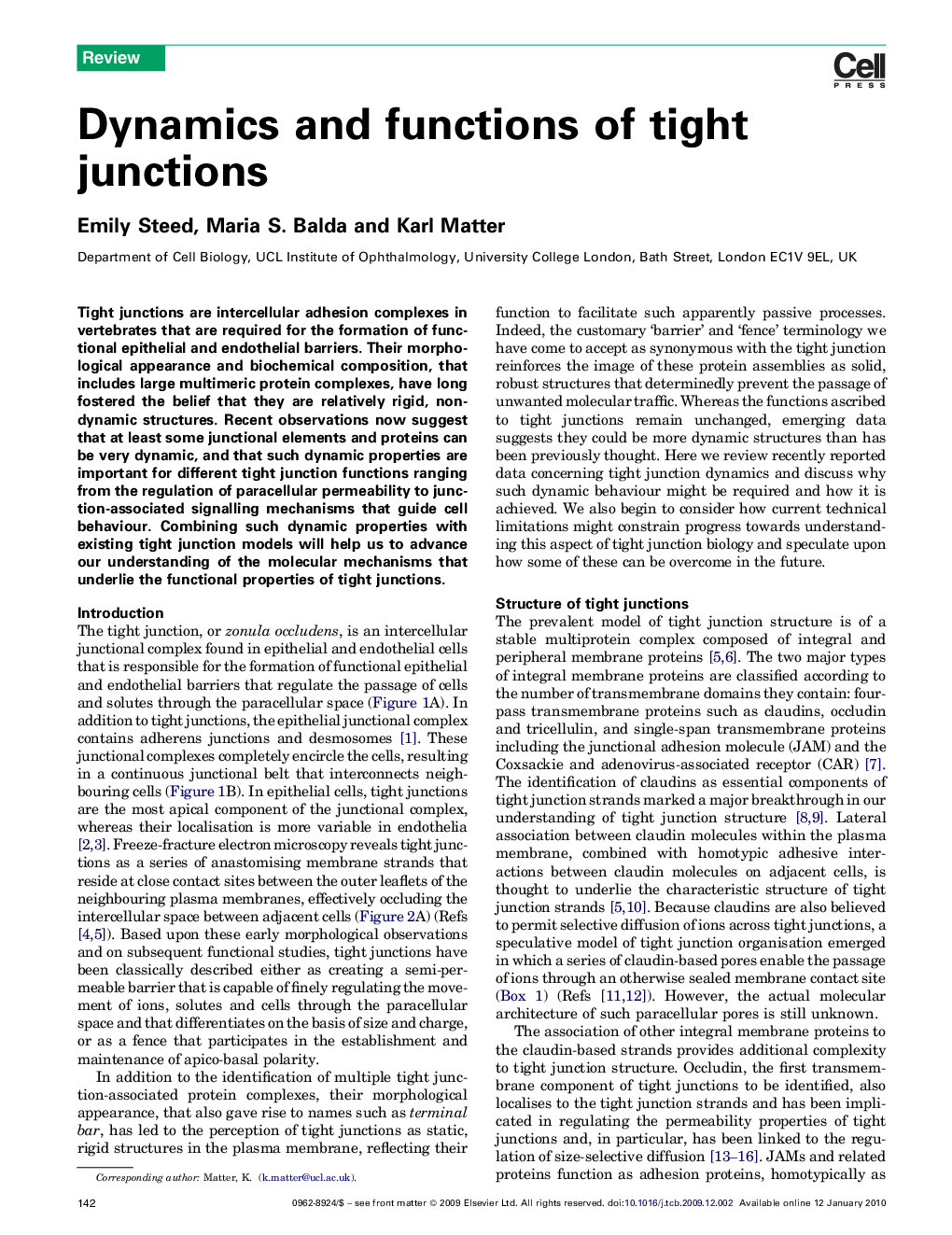| Article ID | Journal | Published Year | Pages | File Type |
|---|---|---|---|---|
| 2204917 | Trends in Cell Biology | 2010 | 8 Pages |
Tight junctions are intercellular adhesion complexes in vertebrates that are required for the formation of functional epithelial and endothelial barriers. Their morphological appearance and biochemical composition, that includes large multimeric protein complexes, have long fostered the belief that they are relatively rigid, non-dynamic structures. Recent observations now suggest that at least some junctional elements and proteins can be very dynamic, and that such dynamic properties are important for different tight junction functions ranging from the regulation of paracellular permeability to junction-associated signalling mechanisms that guide cell behaviour. Combining such dynamic properties with existing tight junction models will help us to advance our understanding of the molecular mechanisms that underlie the functional properties of tight junctions.
